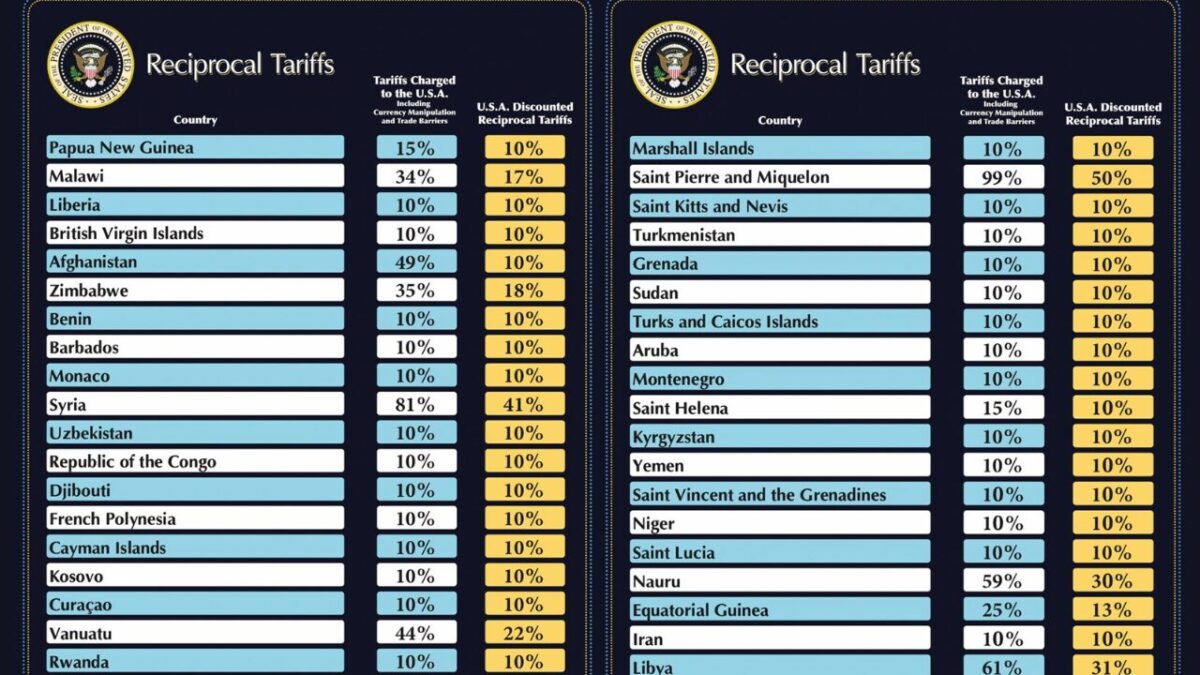President Donald Trump’s new reciprocal tariff policy also includes Afghanistan, imposing a 10 percent duty on Afghan imports alongside dozens of other nations.
The measure, announced by the White House, is part of a broader reassessment of global trade relations aimed at addressing what the administration describes as “imbalanced” tariff structures.
According to the published data, Afghanistan currently charges 49 percent tariffs on U.S. exports. Under the new framework, Afghan goods entering the United States will now be subject to a 10 percent tariff, aimed at restoring what the Trump administration calls “fair and reciprocal” trade.
This move comes as bilateral trade between Afghanistan and the U.S. has dropped significantly in recent years. In 2024, total goods trade between the two countries was reported at around $34 million, a modest figure reflecting both strained diplomatic ties and reduced commercial exchange following the Taliban’s return to power in 2021.
The reciprocal tariff policy affects dozens of countries, with some—such as Syria (81%), Malawi (34%), and Vanuatu (44%)—charging high tariffs on U.S. imports. The Trump administration has responded with matching or standardized 10 to 50 percent tariffs depending on the country.
Economists warn that even seemingly modest tariffs can hinder fragile trade corridors, especially in the case of Afghanistan, where export volume is already limited and reliant on a narrow range of goods. Trade analysts say Afghan exporters may face growing barriers to U.S. markets, particularly for niche exports such as dried fruits, textiles, and handicrafts.





